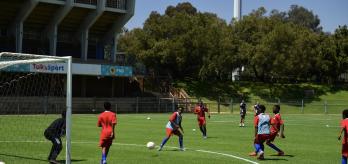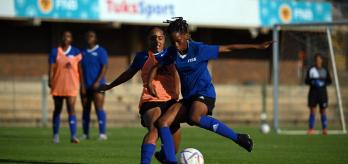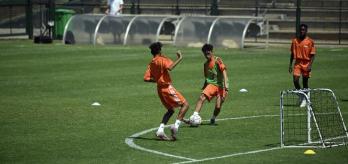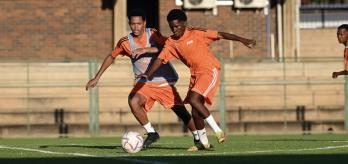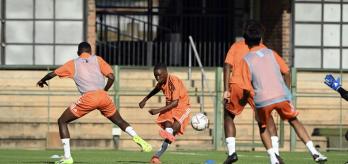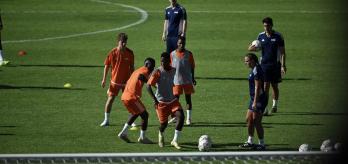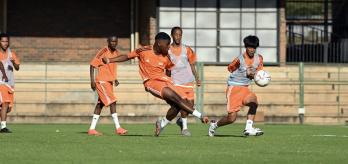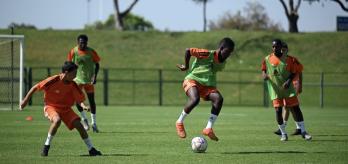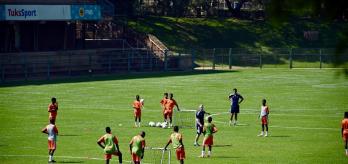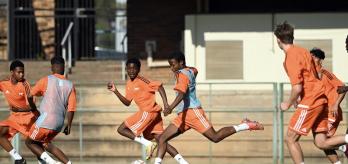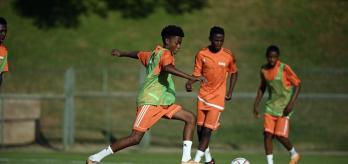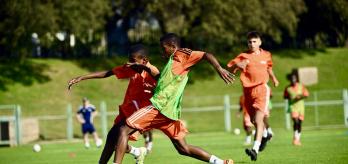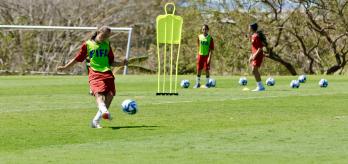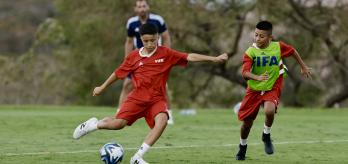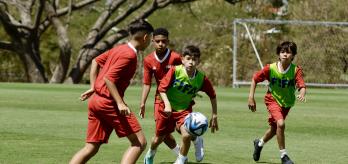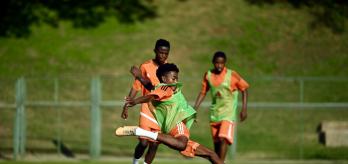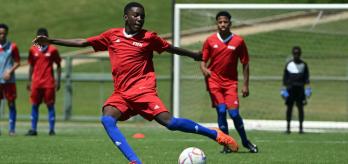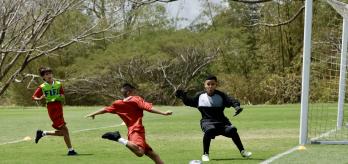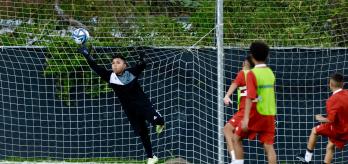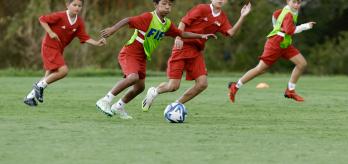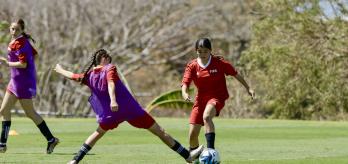Methodology
The intention: What is practised?
This 3v3 attack v. defence game works on an attacking unit’s ability to attack directly and at pace when the opposition are unbalanced and retreating towards goal. The exercise revolves around key unit-level aspects in attack, such as the precision of passes played into runners, and executing runs, dribbles and passes at top speed. The members of the unit are tasked with coordinating the timing of the pass with the run so that the runner is able to latch onto the pass and shoot within one to two touches. Runners should make direct, diagonal runs into gaps in the opposition’s defensive line. Whenever the unit identifies a route to goal, they must be aggressive and attack at great pace.
The scale: For whom is this relevant?
This attack v. defence game focuses on a three-player attacking unit performing quick transitions to create and finish goalscoring chances. The exercise is particularly relevant to situations in which an attacking player receives the ball in transition and has two runners ahead of them. The scenario requires the deepest-lying attacking player to play a quick, precise pass and their team-mates to make darting runs towards goal with a view to taking advantage of any gaps that the opposition defence may have left. The defenders may be out of position, which helps the attackers to identify what kinds of runs to make. The exercise is position-specific, with the two runners simulating wingers running in behind the opposition’s backline.
The practice type: How is the practice designed?
This exercise involves an attack v. defence game played on a reduced-sized playing area that is designed to ensure that the attacking team are able to finish on goal within one to two actions. Transitions are a built-in feature of the game, which is intended to provide attackers with a real-game scenario in which the opposition’s defence has overcommitted. The wide players enter the playing area from their position at the mannequins to give them an understanding of the spaces they need to run into when darting inside and making direct runs. The uninterrupted nature of the exercise forces players to constantly switch mindsets and perform the exercise at high intensity.
Session plan
Organisation
-
Mark out a 45m x 30m playing area. Place a full-size goal at either end of the playing area. Position a goalkeeper in each goal.
-
Place 2 mannequins 5m apart on either side of the playing area, as displayed in the graphic above.
-
Split the players into 2 teams of 6 (oranges v. blues).
-
Position 2 orange players beside the goal (on the goal line) and give them a ball each.
-
Place 1 orange player at each of the 2 mannequins closest to the end of the playing area where the orange player is positioned beside the goal.
-
Mirror the set-up in the opposite half of the playing area with the blue-team players.
Explanation
-
The exercise starts with the orange player beside the goal dribbling the ball into the playing area.
-
Once the orange player has entered the playing area, their team-mates at both mannequins make a darting diagonal run behind the blue team’s defensive line.
-
The ball carrier plays a through-ball to either of their 2 team-mates, and the 3 orange players take on the 3 blue defenders in an attempt to finish on goal.
-
Once the oranges score a goal, the goalkeeper defending the blues’ goal gains possession or the ball goes out of play, the sequence is immediately repeated with a blue-team player entering the playing area along with a team-mate from both mannequins to set up a 3v3 scenario.
-
The orange team now defend, and the blues become the attacking team.
-
Each set of 3 players performs an attacking sequence immediately followed by a defensive sequence before they rotate with another set of 3 players.
-
The mannequins represent the offside line.
Key coaching points
Roles of coaches
-
First coach: leads the session and coaches the players on the positions that they should occupy and the runs that they should make.
-
Second coach: encourages the players from their position on the opposite side of the playing area to the first coach.
-
Third coach: encourages the players from their position beside one of the goals.























